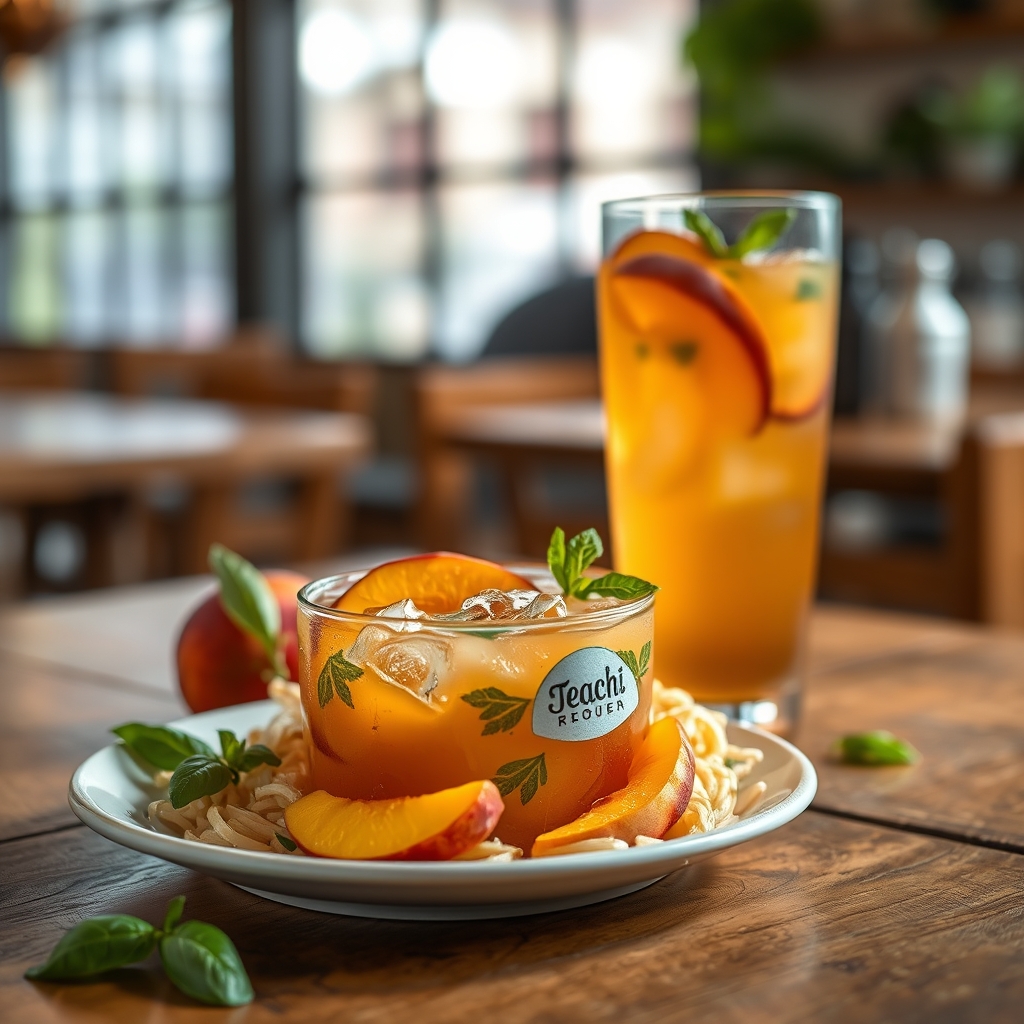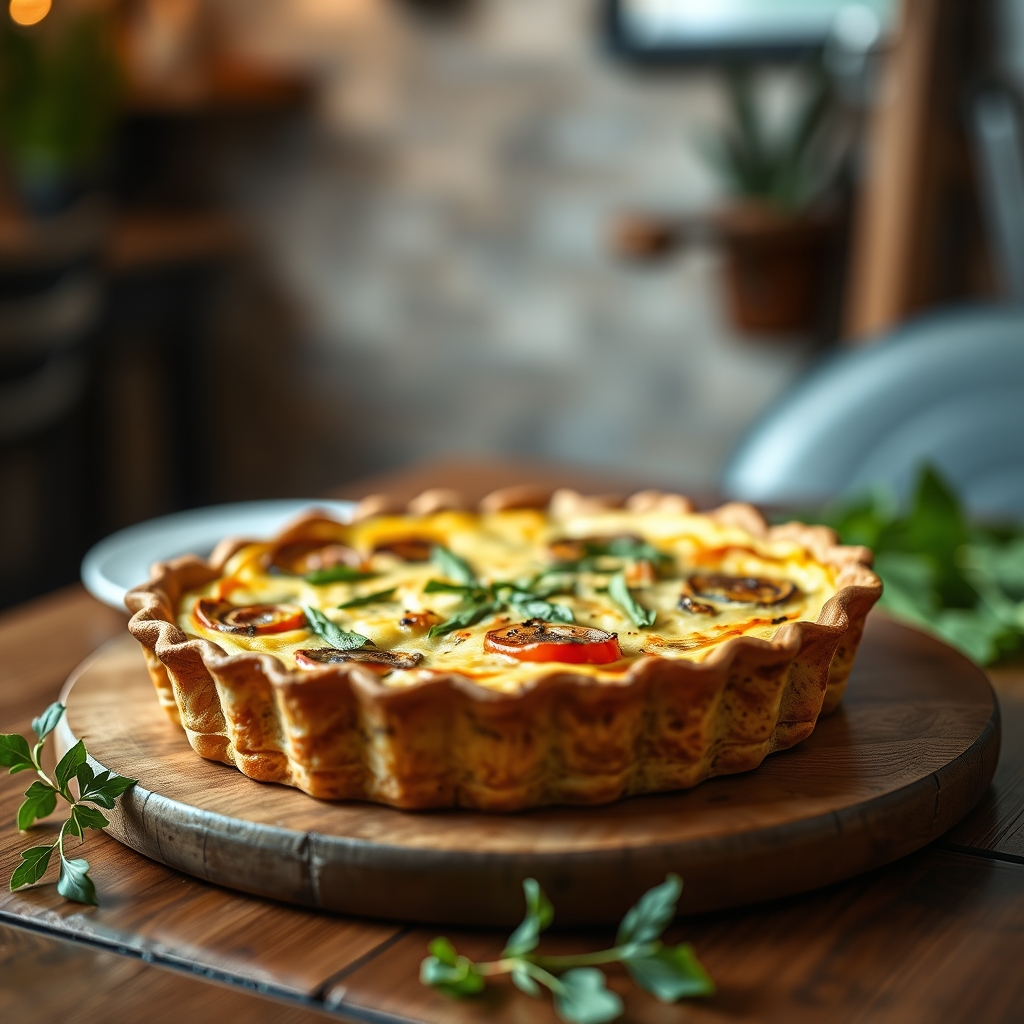Lemon Ricotta Pancakes with Fresh Berries
There’s something undeniably magical about waking up to a stack of fluffy, citrus-kissed pancakes. These Lemon Ricotta Pancakes with Fresh Berries are the kind of breakfast that turns an ordinary morning into something extraordinary. The delicate tang of lemon, the creamy richness of ricotta, and the burst of juicy berries create a symphony of flavors that will make you want to linger at the table just a little longer. Whether you’re hosting a weekend brunch or treating yourself to a leisurely breakfast, this recipe is a guaranteed crowd-pleaser.
Why You’ll Love This Recipe
If you’re still on the fence about whether to make these pancakes, let me give you a few reasons why they deserve a spot on your breakfast table.
- Light and Fluffy Texture: The ricotta cheese adds a luxurious creaminess while keeping the pancakes tender and airy, making each bite melt in your mouth.
- Bright, Zesty Flavor: Fresh lemon zest and juice infuse the batter with a refreshing citrus note that balances the richness of the ricotta.
- Versatile and Customizable: Top them with any seasonal berries or even a drizzle of honey for a personalized touch.
- Perfect for Special Occasions: These pancakes feel indulgent enough for celebrations like Mother’s Day or Easter brunch but are simple enough for lazy Sundays.
- Nutrient-Packed: Ricotta adds protein, and fresh berries bring antioxidants, making this a breakfast that’s as wholesome as it is delicious.
Ingredients Breakdown
Every ingredient in this recipe plays a crucial role in creating the perfect pancake. Here’s why each one matters:
- Ricotta Cheese: The star of the show, ricotta keeps the pancakes moist and adds a subtle creaminess without weighing them down.
- Fresh Lemon Zest and Juice: These provide a vibrant citrus aroma and tangy brightness that cuts through the richness.
- Buttermilk: Its acidity reacts with the baking soda, ensuring the pancakes rise beautifully and stay tender.
- Eggs: They bind the batter while adding structure and a slight richness.
- All-Purpose Flour: The foundation of the batter, giving the pancakes their structure.
- Baking Powder and Baking Soda: These leavening agents work together to create a light, airy texture.
- Fresh Berries (such as blueberries, raspberries, or strawberries): They add a juicy, sweet-tart contrast to the pancakes.
- Maple Syrup or Honey: A drizzle of natural sweetness ties everything together.
How to Make Lemon Ricotta Pancakes with Fresh Berries
Follow these steps for perfect pancakes every time:
- Prepare the Dry Ingredients: In a large bowl, whisk together the flour, sugar, baking powder, baking soda, and a pinch of salt. This ensures even distribution of leavening agents for consistent fluffiness.
- Mix the Wet Ingredients: In another bowl, combine the ricotta, buttermilk, eggs, lemon zest, and lemon juice. Whisk until smooth but avoid overmixing to keep the batter light.
- Combine Wet and Dry Ingredients: Gently fold the wet mixture into the dry ingredients until just combined. A few lumps are okay—overmixing leads to dense pancakes.
- Heat the Griddle or Pan: Preheat a non-stick skillet or griddle over medium-low heat. A properly heated surface ensures even cooking without burning.
- Cook the Pancakes: Lightly grease the pan with butter or oil. Pour ¼ cup of batter for each pancake. Sprinkle a few fresh berries onto each pancake as they cook. When bubbles form on the surface (about 2-3 minutes), flip and cook for another 1-2 minutes until golden.
- Serve Warm: Stack the pancakes, top with more fresh berries, and drizzle with maple syrup or honey.
Pro Tips for the Best Results
- Use Full-Fat Ricotta: It provides the best texture and flavor. Low-fat versions can make the pancakes dry.
- Don’t Overmix the Batter: A few lumps are fine. Overworking the batter develops gluten, resulting in tough pancakes.
- Control the Heat: Cooking on medium-low ensures the pancakes cook through without burning on the outside.
- Keep Pancakes Warm: Place cooked pancakes on a baking sheet in a 200°F oven while you finish the batch.
- Add Berries Strategically: Pressing a few berries into the batter as it cooks prevents them from sinking to the bottom.
Variations and Substitutions
This recipe is wonderfully adaptable to different tastes and dietary needs:
- Gluten-Free: Swap all-purpose flour for a gluten-free blend. Almond flour also works but may require extra moisture.
- Dairy-Free: Use coconut ricotta and almond milk mixed with a teaspoon of vinegar instead of buttermilk.
- Extra Protein: Add a scoop of vanilla or unflavored protein powder to the dry ingredients.
- Different Citrus: Try orange or lime zest for a unique twist.
- Berry Alternatives: Use sautéed apples, caramelized bananas, or even dark chocolate chips instead of berries.
What to Serve With It
These pancakes are delicious on their own, but pairing them with the right sides can elevate your meal:
- Whipped Cream or Yogurt: A dollop of lightly sweetened whipped cream or Greek yogurt adds creaminess.
- Crispy Bacon or Sausage: The salty-sweet contrast is irresistible.
- Fresh Fruit Salad: A mix of seasonal fruits complements the citrus notes.
- Hot Coffee or Tea: A warm drink balances the bright flavors.
- Lemon Curd: For an extra citrus kick, serve with a spoonful of homemade lemon curd.
How to Store and Reheat
If you have leftovers (which is rare!), here’s how to keep them fresh:
- Refrigeration: Store cooled pancakes in an airtight container with parchment paper between layers. They’ll keep for up to 3 days.
- Freezing: Freeze pancakes in a single layer on a baking sheet before transferring to a freezer bag. They’ll last up to 2 months.
- Reheating: Warm refrigerated pancakes in the microwave for 20-30 seconds. For frozen, toast them in a toaster or bake at 350°F for 5-7 minutes until heated through.
Frequently Asked Questions (FAQs)
Can I make the batter ahead of time?
It’s best to cook the pancakes immediately after mixing the batter. Letting it sit can cause the leavening agents to lose their effectiveness, resulting in flatter pancakes.
Why are my pancakes dense?
Overmixing the batter or using too much ricotta can lead to dense pancakes. Measure ingredients carefully and mix just until combined.
Can I use frozen berries?
Yes, but thaw and pat them dry first to prevent excess moisture from making the pancakes soggy.
What if I don’t have buttermilk?
Make a quick substitute by adding 1 tablespoon of lemon juice or vinegar to 1 cup of milk and letting it sit for 5 minutes.
Can I make these pancakes vegan?
Yes! Use dairy-free ricotta, flax eggs (1 tbsp ground flaxseed + 3 tbsp water per egg), and plant-based milk with vinegar for buttermilk.
Final Thoughts
There’s a reason these Lemon Ricotta Pancakes with Fresh Berries have become a staple in my kitchen—they’re effortlessly elegant yet comforting, and they never fail to impress. Whether you’re serving them to guests or savoring them slowly with a cup of coffee, they’re a reminder that the best mornings start with something made with love. So go ahead, whip up a batch, and let the bright flavors of lemon and berries turn your breakfast into a celebration.
Print
Lemon Ricotta Pancakes with Fresh Berries
Description
Fluffy, citrus-infused ricotta pancakes topped with a vibrant mix of fresh berries and a drizzle of maple syrup. Perfect for a luxurious weekend brunch!
Ingredients
For the Crust:
- For the pancakes:
- 1 cup all-purpose flour
- 2 tablespoons granulated sugar
- 1 teaspoon baking powder
- 1/2 teaspoon baking soda
- 1/4 teaspoon salt
- 1 cup ricotta cheese
- 2 large eggs
- 1/2 cup milk
- Zest of 1 lemon
- 2 tablespoons fresh lemon juice
- 1 teaspoon vanilla extract
- For serving:
- 1 cup mixed fresh berries (strawberries, blueberries, raspberries)
- Maple syrup, to taste
- Powdered sugar, for dusting (optional)
- Fresh mint leaves, for garnish (optional)
Instructions
1. Prepare the Crust:
- 1. In a large bowl, whisk together flour, sugar, baking powder, baking soda, and salt.
- 2. In another bowl, mix ricotta, eggs, milk, lemon zest, lemon juice, and vanilla until smooth.
- 3. Gently fold the wet ingredients into the dry ingredients until just combined (do not overmix).
- 4. Heat a non-stick skillet or griddle over medium heat and lightly grease with butter or oil.
- 5. Pour 1/4 cup batter per pancake onto the skillet. Cook until bubbles form on the surface (about 2-3 minutes), then flip and cook until golden (1-2 minutes more).
- 6. Serve warm topped with fresh berries, a drizzle of maple syrup, and optional powdered sugar or mint.
Notes
For extra fluffiness, let the batter rest for 5-10 minutes before cooking. Substitute buttermilk for milk if desired. Leftover pancakes freeze well for up to 1 month.




